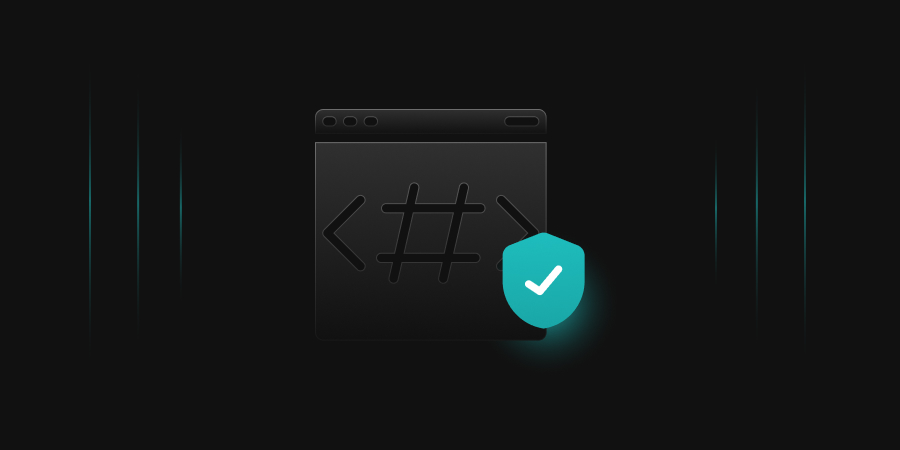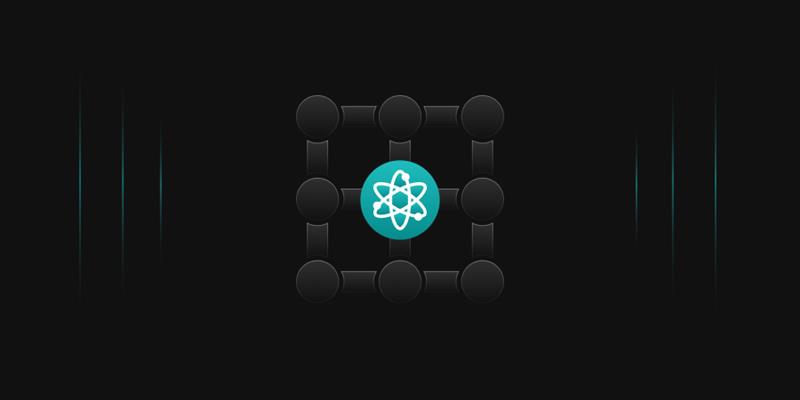- Introduction
- Why Does CSWP 48 Matter?
- What Does CSWP 48 Do?
- Key Capabilities Demonstrated by the Migration to PQC Project
- Connecting PQC to Your Existing Security and Compliance World
- What This Means for Your Organization?
- Complementing Other NIST and Industry Materials
- How Can Encryption Consulting Help?
- Conclusion
Introduction
The transition to Post-Quantum Cryptography (PQC) is one of the most significant security initiatives of the decade. As we close out November, the industry is focusing intently on the documentations provided by the National Institute of Standards and Technology (NIST). Specifically, the Cybersecurity White Paper CSWP 48 IPD, released on September 18th, delivers a comprehensive status report and practical advice straight from the trenches of the National Cybersecurity Centre of Excellence’s (NCCoE) PQC project.
If you’re planning your long-term security strategy, this document is your definitive guide to migrating your systems safely and strategically. This blog explores the key themes of NIST’s CSWP 48, how it aligns PQC migration with well-established frameworks, and what that alignment means for organizations preparing for a quantum-resilient future.
Why Does CSWP 48 Matter?
The shift to PQC is now a complex, mandatory, and imminent global compliance shift, clearly defined by international standards bodies and governments. NIST has cemented this transition by not only standardizing new, complex PQC algorithms like ML-KEM and ML-DSA (FIPS 203, 204, 205), but also by establishing a firm deprecation timeline for quantum-vulnerable cryptography like RSA and ECC/ECDSA, which will be phased out for federal and critical U.S. systems by 2030 and disallowed entirely by 2035.
This move is mirrored globally, demonstrating a strategic imperative: both Canada and the European Union have published coordinated PQC roadmaps targeting a full transition by 2035 (with high-risk systems migrated earlier, by 2030 or 2031), while the NSA’s CNSA 2.0 in the U.S. is already mandating the use of PQC, including making digital signatures mandatory for National Security Systems on a tight schedule.
What Does CSWP 48 Do?
So, how do you map a brand-new, massive undertaking like PQC into your already overloaded security schedule?
That’s the power of NIST’s Cybersecurity White Paper CSWP 48 IPD. This document acts as a crucial translator for your security team. It connects the entirely new world of PQC migration directly to the established, trusted frameworks you use every day.
Think of it as your bridge between the future of cryptography and the frameworks you already trust. The white paper links new PQC migration capabilities to the NIST Cybersecurity Framework (CSF) 2.0 and NIST SP 800-53, providing a clear view of how quantum readiness fits into your existing security strategy.
These details ensure your move to quantum-safe cryptography isn’t a jarring, standalone project. It gives you the clear, compliant language to integrate this vital effort into your existing cybersecurity goals and audit requirements.
The table below highlights key mappings from NIST’s CSWP 48, showing how the demonstrated PQC migration capabilities align with the NIST Cybersecurity Framework 2.0 and SP 800-53 controls.
| Capability Area | Function Summary | Mapped Security Frameworks |
|---|---|---|
| Crypto Discovery and Inventory | Tools and processes to identify crypto usage across systems, code, certificates, keys, and HSMs. This enables understanding of cryptographic assets and quantum-vulnerable algorithms present. | Supports NIST Cybersecurity Framework identify functions (Asset Management, Risk Assessment) and SP 800-53 controls on inventory, information location, and contingency planning. |
| Cryptographic Analytics | Analyze inventory to find weak, non-compliant, and quantum vulnerable crypto assets to inform risk decisions and compliance. | Supports CSF risk management subcategories such as risk assessment, identity management, and data protection (PR.AA and PR.DS series). |
| PQC Algorithm & Service Implementations | Demonstrate and test new quantum-resistant algorithms and services for authentication, identity binding, data protection, and access control. | Maps to CSF Protect function subcategories and SP 800-53 controls covering configuration management, software authorization, and network access protection. |
| Integration Tools & Plugins | Post-quantum compatible integration tools for cryptographic libraries, network infrastructures, PKI, and HSMs. | Aligns with organizational cybersecurity policy controls and identity access management frameworks. |
| Certificate Authority Implementations | PQC-enabled certificate authorities aligned with organizational security strategy. | Enforces cybersecurity policies for certificate lifecycle management and issuance. |
| Hardware Security Modules (HSMs) | Physical devices supporting quantum-safe key storage and cryptographic operations with protection against unauthorized access. | Protects identities, authentication data, and ensures confidentiality and integrity, supporting CSF PR.AA and PR.DS functions. |
Key Capabilities Demonstrated by the Migration to PQC Project
The NCCoE coordinated a project that demonstrated the two essential, non-negotiable capabilities every security team must develop to achieve a successful PQC migration:
1. Crypto Discovery and Inventory (You Can’t Secure What You Can’t See)
Before you can migrate anything, you must know exactly what you’re protecting and where it lives. This foundational capability is all about finding every instance of vulnerable cryptography across your enterprise.
The Problem: Cryptography isn’t just in certificates; it’s buried in firmware, code repositories, VPN clients, custom applications, and countless SSH keys. We call this “cryptographic sprawl.”
The NCCoE Solution: The project validated a holistic approach using a combination of powerful methods:
- Active Scanning Tools: Like automated detectives, these tools probe hosts, network services, and software build environments to flag vulnerable algorithms and their use.
- Passive Monitoring Tools: These provide continuous surveillance, collecting telemetry and analyzing logs to catch vulnerable crypto in action during normal operations.
- Cryptographic Asset Management: This is the centralized ledger, correlating data on keys, certificates, HSMs, and the connections between software and hardware components.
Developing this comprehensive cryptographic inventory isn’t just good practice, it’s the required first step. It directly aligns with the NIST CSF 2.0 functions, specifically Identify and Protect, giving you the auditable foundation for your entire migration strategy.
2. Real-World PQC Interoperability and Performance
Once you’ve identified the vulnerable assets, the next step is proving that the new quantum-resistant replacements will actually work at enterprise scale without breaking the bank or slowing down your business.
The New Crypto Challenge: NIST’s new PQC algorithms are often larger and require more computational power than the classic RSA and ECC algorithms we’re used to. We need confidence they can perform under pressure.
The NCCoE Solution: The project tested the new, standardized PQC algorithms in live environments, focusing on mission-critical use cases:
- Compatibility Testing: Ensuring PQC works seamlessly with essential network protocols like TLS 1.3 (for secure web traffic), SSH (for remote access), and QUIC.
- Performance Metrics: Measuring the real-world impact on metrics that matter to the business, such as connection handshake speed, computational load, and resource usage, especially within specialized hardware like HSMs.
- Cross-Vendor Interoperability: Confirming that cryptographic libraries and hardware from different vendors can communicate and operate reliably at scale.
These tests successfully demonstrated that PQC is production-ready. The results provide the vital confidence and data needed to assure stakeholders that the migration to quantum-resistant cryptography will meet demanding security standards while maintaining acceptable enterprise performance.
Connecting PQC to Your Existing Security and Compliance World
The single most valuable thing the NIST CSWP 48 document does is eliminate the complexity and guesswork of the PQC transition by linking PQC migration capabilities to the frameworks you already trust. This means the enormous PQC project doesn’t have to be a separate, terrifying silo. It just becomes the next logical evolution of your current security program.
1. Aligning with NIST Cybersecurity Framework 2.0
The document acts as a translator, showing how PQC capabilities map directly into the familiar core functions of the CSF 2.0:
- Discovery Corresponds to Identify and Assess: The cryptographic inventory and discovery process maps perfectly to function like Asset Management and Cybersecurity Risk Assessment. You are simply updating your risk picture to include the quantum threat.
- Migration Relates to Protect and Govern: The actual work of switching algorithms and updating systems maps directly to the Protect (PR) and Govern (GV) functions. This includes critical CSF categories like Access Control, Identity Management, and Protective Technology.
2. Integrating with NIST SP 800-53 Security Controls
Beyond the high-level CSF, the CSWP 48 document offers the granular detail that compliance and technical teams need. It links PQC capabilities to specific technical and managerial controls within the NIST SP 800-53 catalogue.
This means PQC migration is integrated into existing control families like:
- System and Communications Protection (SC): Updating communication protocols to use PQC.
- Configuration Management (CM): Ensuring new PQC requirements are part of your baseline configurations.
- Identity and Authentication (IA): Upgrading digital certificates and key exchange methods.
The CSWP 48 provides the blueprint to justify, budget, and execute your PQC migration inside your established compliance structure. By speaking the language of the CSF and SP 800-53, it ensures PQC is treated as a priority component of enterprise risk management, making the entire transition smoother and easier to implement across departments.
What This Means for Your Organization?
The ultimate purpose of the NIST CSWP 48 document is to move you beyond fear and into confident, measurable action. By structuring the PQC challenge around familiar frameworks, it delivers immediate, high-value clarity for every organization.
The Immediate Benefits You Gain:
- A Clear Context for Risk Management: You instantly gain a way to talk about PQC migration that your executives and auditors already understand. The document provides a clear framework to place PQC activities directly within your existing risk management and compliance programs, rather than treating it as a foreign, unfunded mandate.
- Actionable Discovery Tools: You get the tools and insights needed to conduct a proper cryptographic audit. This allows you to accurately assess where your specific cryptography is most at risk and understand which of your core organizational functions and controls (like Access Control or System Protection) the PQC migration directly supports.
- Confidence in the New Technology: You are no longer waiting for answers on the new algorithms. The project’s demonstrated interoperability and performance testing provide solid insight into the characteristics of emerging PQC algorithms, drastically reducing uncertainty about their viability and readiness for enterprise deployment.
- A Solid Foundation for Planning: You receive a reliable baseline to build your plan. This helps you move past generalized anxiety and create a risk-informed, compliance-aligned migration strategy that fits neatly within your current security governance and budget cycles.
By viewing PQC migration through the trusted lens of risk frameworks like CSF and SP 800-53, you entirely avoid fragmented, isolated, and expensive “emergency” projects. Instead, you make sustainable, accountable progress toward quantum resilience that aligns with your long-term security goals.
Complementing Other NIST and Industry Materials
While CSWP 48 doesn’t give strict migration timelines or detailed step-by-step instructions, it fills a key role by tying technical migration capabilities to risk management frameworks.
Here’s the timeline to abide by:
- 2024–2026: Establish standards, develop your CBOM, secure necessary funding, and train your team. Begin with small-scale implementations, such as testing PQC in internal applications.
- 2027–2029: Collaborate with vendors to integrate PQC technologies and run pilot programs in low-risk environments, such as employee portals or backup systems.
- 2030–2033: Address emerging risks as quantum computing capabilities advance, prioritizing critical infrastructures like financial platforms and government networks.
- By 2035: Achieve a complete transition to quantum-safe encryption across all environments, including cloud systems and IoT devices.
How Can Encryption Consulting Help?
Encryption Consulting is your trusted partner in achieving quantum-safe security. We guide you through every phase, from discovery to implementation, with clarity, confidence, and proven expertise.
- Cryptographic Discovery & Inventory: We begin by mapping your entire cryptographic landscape. This includes identifying all systems (on-prem, cloud, hybrid) using cryptography, cataloguing keys, certificates, algorithms, and dependencies across applications, APIs, networks, and databases. The result: a detailed inventory and baseline for assessing quantum risk.
- PQC Impact Assessment: Next, we evaluate vulnerabilities to quantum threats by analyzing cryptographic assets relying on RSA, ECC, and similar algorithms. We assess your PKI, HSMs, and applications for PQC readiness and deliver a prioritized report highlighting high-risk areas and migration needs.
- PQC Strategy & Roadmap: With risks defined, we create a tailored, phased migration strategy aligned with your business, compliance, and technical goals. This includes policy updates, algorithm agility design, and a clear roadmap outlining pilot, hybrid, and full deployment stages.
- Vendor Evaluation & Proof of Concept: We help you select and test PQC-ready solutions. Our team manages RFI/RFP processes, runs PoCs to evaluate vendor offerings, and delivers comparison reports to ensure optimal technology selection for your environment.
- Pilot Testing & Scaling: Before full deployment, we validate PQC models in pilot environments to ensure interoperability and minimize disruption. Feedback from technical and business teams fine-tunes the rollout for scalability and efficiency.
- PQC Implementation: Finally, we execute full-scale PQC integration across your PKI, infrastructure, and applications, maintaining compliance, continuity, and hybrid algorithm support. We also provide hands-on training, monitoring, and lifecycle management to sustain long-term security.
Transitioning to PQC is complex, but you don’t have to do it alone. Encryption Consulting ensures a smooth, secure journey. Reach out to us at info@encryptionconsulting.com and let us build a customized roadmap that aligns with your organization’s specific needs.
Conclusion
The message is simple, PQC migration is not a project you get to choose; it’s a deadline you must meet. The NIST CSWP 48 document gives you the authority and the blueprint to stop worrying about the “what if” of quantum and start working on the “how-to” right now. By using this framework, you’re not just adding a layer of security; you’re securing your data for the long term, maintaining compliance, and gaining a critical competitive edge. Don’t wait for the mandate to turn into a crisis.
Your next step is clear: Start the conversation today. This is where our PQC Advisory Services step in to translate the NIST roadmap directly into your environment, helping you build a risk
- Introduction
- Why Does CSWP 48 Matter?
- What Does CSWP 48 Do?
- Key Capabilities Demonstrated by the Migration to PQC Project
- Connecting PQC to Your Existing Security and Compliance World
- What This Means for Your Organization?
- Complementing Other NIST and Industry Materials
- How Can Encryption Consulting Help?
- Conclusion




